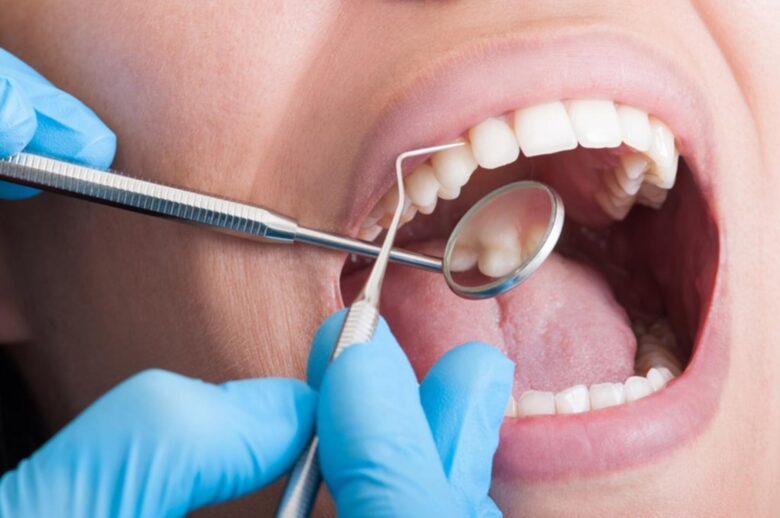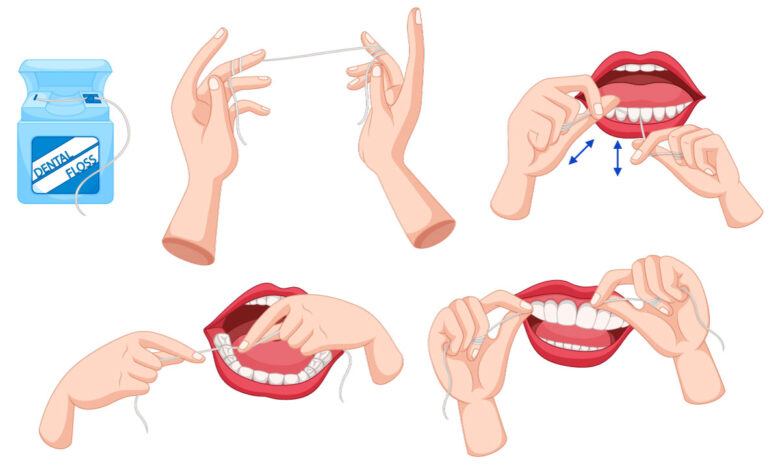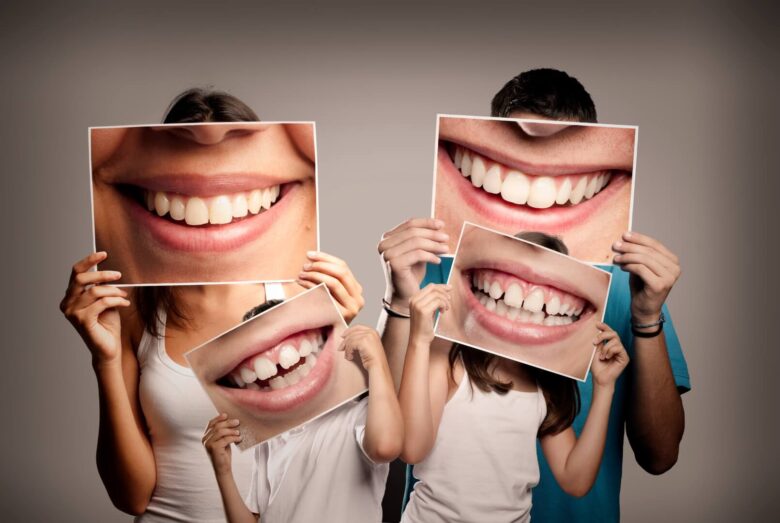In the vibrant tapestry of smiles that brighten our days and elevate our spirits, straight teeth often stand out as symbols of aesthetic allure and radiance. However, the world of orthodontics ventures far beyond mere cosmetic appeal, plunging into a realm where aligned teeth serve as silent guardians of our overall health. “Orthodontics Beyond Aesthetics: Health Benefits of Straight Teeth” seeks to unravel the intricate connection between well-aligned teeth and holistic well-being, showcasing that orthodontic treatments are not just a passport to a visually pleasing smile, but a gateway to enhanced oral and systemic health. Journey with us as we delve into the depths of orthodontic interventions, exploring the multifaceted advantages they bestow upon our bodies, and how the straightening of teeth transgresses the boundaries of visual appeal, fortifying our health in subtle, yet impactful ways.
Contents
Straight Teeth and Cleaning Routine

Source: smile101.com
Easier Oral Hygiene
Teeth that are crooked, crowded, or misaligned present a labyrinthine challenge for maintaining cleanliness. The nooks and crannies formed by overlapping or tightly-packed teeth can be havens for food particles, bacteria, and plaque, which are not only difficult to clean but also create a breeding ground for cavities and gum disease. Conversely, when they are straightened through orthodontic treatments, they allow for easier access and less complexity in navigating your hygiene tools—be it a toothbrush, dental floss, or an interdental cleaner.
A top orthodontist practicing in Limestone Hills Orthodontics in Austin, TX and a Professor at two dental Schools confirms that the presence of crowding is, beyond just an esthetic issue, a critical factor to periodontal diseases and bone loss. Do not neglect orthodontic issues are purely esthetic concerns.
Reducing Plaque Accumulation
Straight teeth, by virtue of their alignment, naturally minimize the crevices where plaque can accumulate. Less plaque means a lower risk of developing cavities and periodontal disease, thereby enhancing overall oral health. Furthermore, with fewer hard-to-reach areas, the process of removing bacterial buildups becomes notably more straightforward, ensuring that every cleaning session is thorough and effective.
Aiding in Effective Flossing
Flossing, an integral part of oral hygiene, becomes significantly less cumbersome with straight teeth. The ease of sliding floss between well-aligned teeth without unnecessary force or awkward hand movements reduces the risk of causing damage to the delicate gums. In contrast, crowded smile may impede efficient flossing, leaving behind residual bacteria and food particles that can instigate dental issues down the line.

Source: sonnykimdmd.com
Mitigating the Risk of Gum Disease
Orthodontic alignment mitigates the potential for gum disease by alleviating the stress and strain on the oral structures. Straight teeth ensure that pressure is evenly distributed when biting and chewing, preventing undue stress on the gums and supporting bone structures. This uniform distribution of force safeguards the integrity of the gums, precluding them from receding or developing disease due to uneven pressure.
Enhancing Professional Cleanings
Even professional cleanings benefit from orthodontically treated teeth. Dental professionals can perform more comprehensive cleanings when they are in alignment since every surface can be easily accessed and polished. This maximizes the efficacy of professional preventive care, ensuring that each visit to the dentist provides optimal benefit towards maintaining your oral health.
Prevention of Tooth Wear
When teeth are aligned judiciously through orthodontic treatments, they harmonize in a manner that allows for an equitable distribution of biting and chewing forces. This uniform distribution ensures that no particular tooth bears an excessive burden during functional activities, thereby minimizing localized wear and mitigating the risk of premature erosion or attrition. In contrast, misaligned teeth often subject specific one to bear disproportionate loads, hastening their wear and potentially leading to sensitivity, fractures, and other complications.

Source: medium.com
Mitigating Parafunctional Habits
Orthodontically straightened teeth also present a well-orchestrated occlusion—where the upper and lower teeth meet harmoniously, without unduly stressing the temporomandibular joints and minimizing the propensity for parafunctional habits like bruxism ( grinding). Bruxism, often consequent to misaligned teeth, subjects them to tremendous forces, exacerbating wear, and potentially leading to flattened occlusal (biting) surfaces, fractures, and even loss of tooth structure. Through creating a balanced occlusion, orthodontic treatment indirectly curtails the deleterious cascading effects of such parafunctional habits on dental wear.
Reducing Risk of Cracks and Chips
The uniform contact between well-aligned upper and lower teeth also minimizes the risk of chipping or cracking. Misaligned teeth may impact each other improperly, causing stress points where fractures are more likely to occur. These tiny fractures not only enhance the risk of more significant breaks in the future but also accelerate the rate of wear, as these irregularities can create areas where force is concentrated. A seamlessly aligned dentition navigates away from this pitfall, offering a protective haven for each individual tooth.
Enhancing Longevity of Dental Work
In instances where dental restorations, such as crowns or fillings, are present, ensuring teeth are orthodontically aligned further safeguards against unnecessary wear. Prosthetic dental work, while durable, also necessitates a balanced distribution of forces to guarantee their longevity and functional efficacy. Orthodontic alignment fosters a conducive environment for preserving not only the natural dentition but also any accompanying restorative work, ensuring a holistic conservation of the entire oral functional apparatus.

Source: loveteethdp.co.uk
Decreased Headaches and Neck Pain
At the nexus of orthodontic alignment and pain alleviation lies the principle of balanced occlusion – a state where upper and lower teeth articulate in a manner that distributes forces evenly across the jaw during function. Misaligned teeth or malocclusions can disrupt this harmony, leading to unequal force distribution and thereby straining the temporomandibular joint (TMJ) and adjacent musculature.
Improving Muscular Biomechanics
Straight teeth, achieved through meticulous orthodontic treatment, reorient the biomechanics of the jaw, facilitating a balanced articulation that eases the burden on the TMJ and associated muscles. By reducing the undue strain on these structures, the incidence of pain and tension cascading towards the head and neck regions is minimized, providing not just a functional, but a therapeutic respite.
Negating Parafunctional Habits
Beyond direct force distribution, orthodontic treatment also plays a subtle role in mitigating parafunctional habits like bruxism (nighttime teeth grinding) and clenching, which are often exacerbated by malocclusions and misalignments. These habits are notorious for instigating TMJ issues, headaches, and muscular pain in the craniofacial and neck regions. Thus, a well-aligned dentition can serve as a foundational step towards negating the triggers for these detrimental habits.

Source: impressions-dental-care.co.uk
Ergonomics of Posture
In a ripple effect, the alignment of teeth and the proper function of the jaw can influence the posture of the head and neck, contributing to an ergonomic alignment that minimizes the risk of developing chronic pain. Ensuring that the jaw operates without deviation or displacement enhances overall postural stability, indirectly averting scenarios that could otherwise perpetuate chronic headaches and neck pain.
Choosing the Right Orthodontic Care
In the realm of dental health, orthodontics holds a special place. Not only does it transform smiles, but it also lays the groundwork for improved overall health. For those seeking orthodontic treatments, it’s paramount to choose a provider who is well-versed in the multifaceted health implications of straight teeth. Bellevue has trusted orthodontists who prioritize this comprehensive approach. Among them, Schur Orthodontics stands out, not only for delivering outstanding aesthetic outcomes but also for emphasizing the broader health benefits that come with well-aligned teeth.
